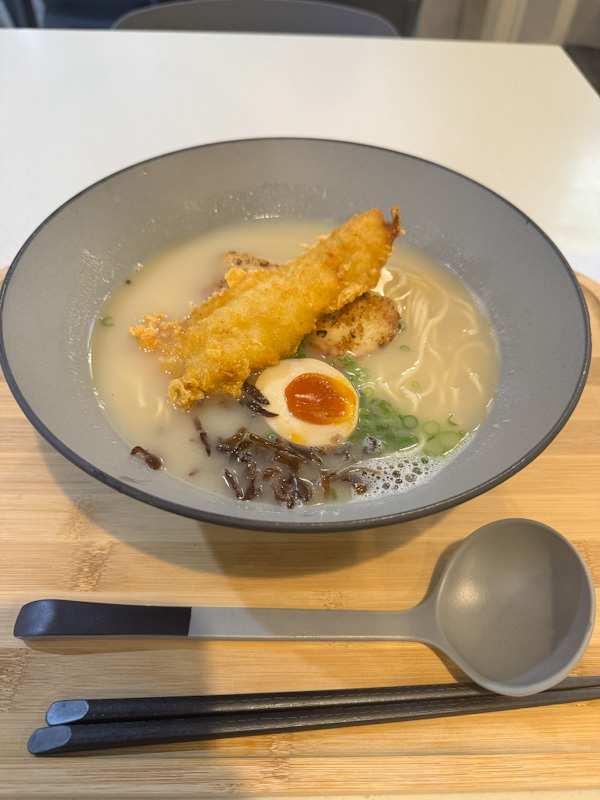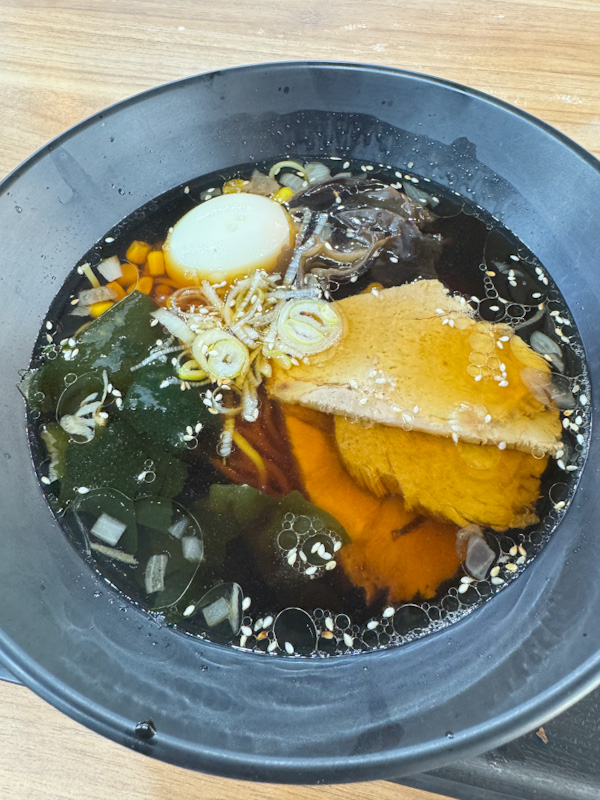WHAT WE ATE
- Shoyu Ramen – 90/100, Tokyo, 8 April 2025
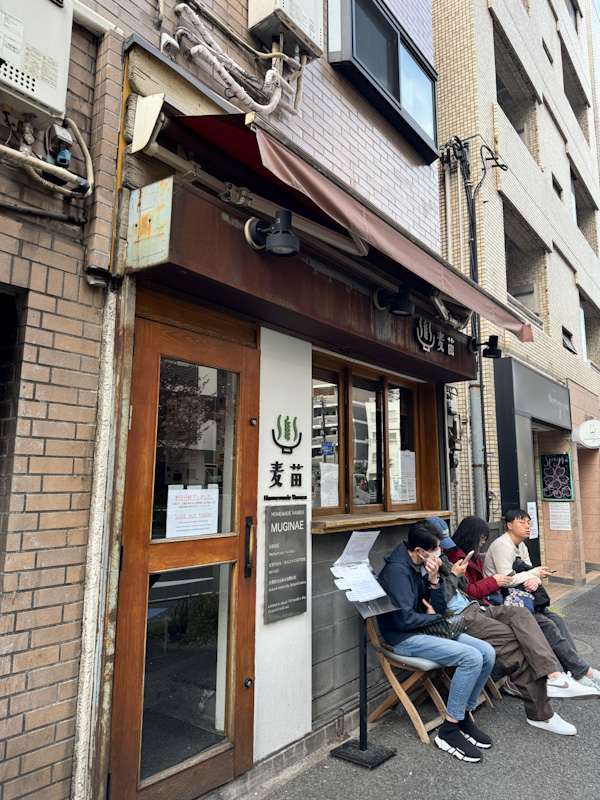

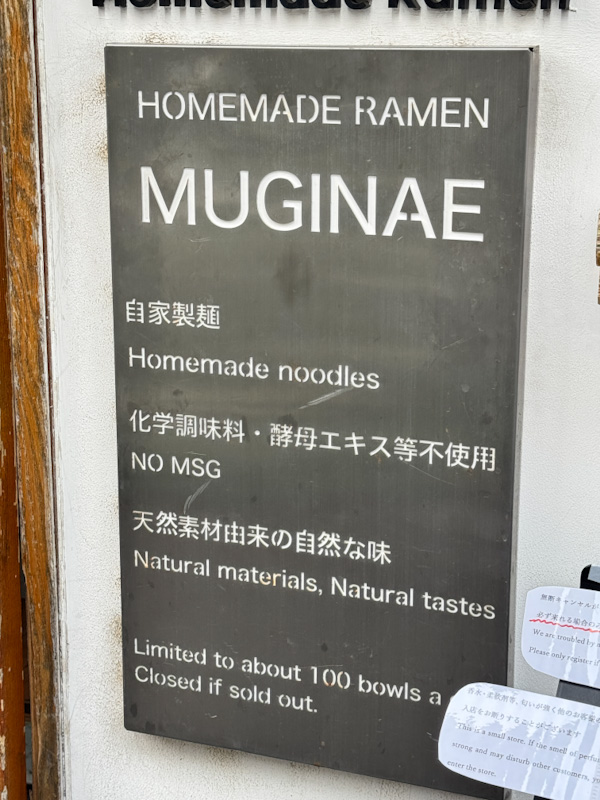

Homemade Ramen Muginae is one of Tokyo’s most talked-about ramen joints—and for good reason. Tucked away near Omori Station, this cozy spot has been making waves since it first opened, earning a Michelin Bib Gourmand nod as far back as 2016. It’s not just a local favorite either—Muginae consistently ranks among the top on Tabelog, even snagging the #2 spot in Tokyo with an impressive score of 3.98 in the 2022 rankings.
With a strong showing on the Tabelog Top 100 Ramen Restaurants list year after year, Muginae has become a bit of a pilgrimage site for serious noodle lovers. And once you’ve tried their masterfully crafted bowls, it’s easy to see why.
A quick heads-up about the queue system—it can be a little confusing (and maybe even intimidating) if it’s your first time visiting this popular ramen spot. Ever since they switched to an online reservation system, walk-ins have basically become a thing of the past.
If you’ve secured a reservation, make sure to arrive early. The chef steps out and calls out names to the crowd waiting outside, and if you miss your turn, it’s considered a no-show. When you get there, you’ll need to wait patiently outside—there’s even a note on the standing table asking guests not to enter unless they’re called. Also, don’t be surprised if your booking time isn’t super precise. We had a 2:15pm slot but only got called in around 2:50pm.
At the time of writing, there’s a non-refundable booking fee of ¥390. Do note that there’s also a penalty if you cancel or don’t show up. It’s best to check their latest terms and conditions on TableCheck just to be safe: https://www.tablecheck.com/en/shops/muginae/reserve
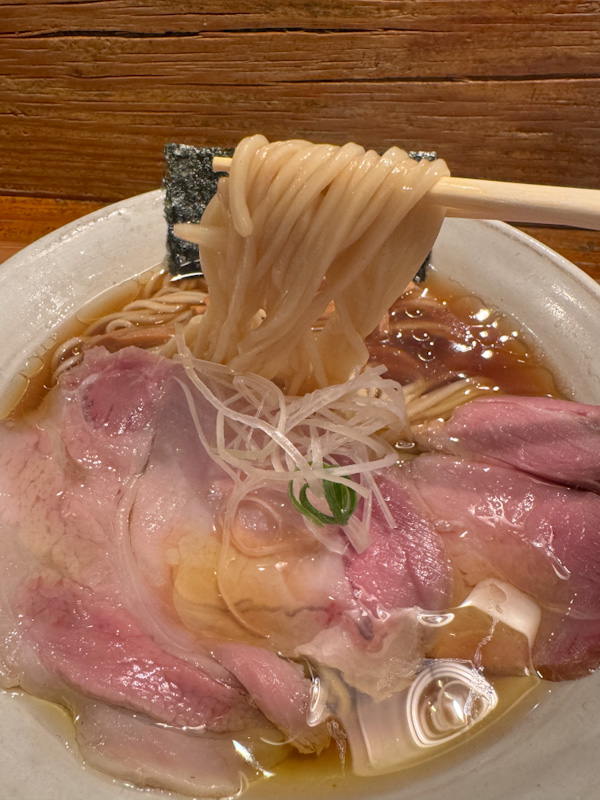
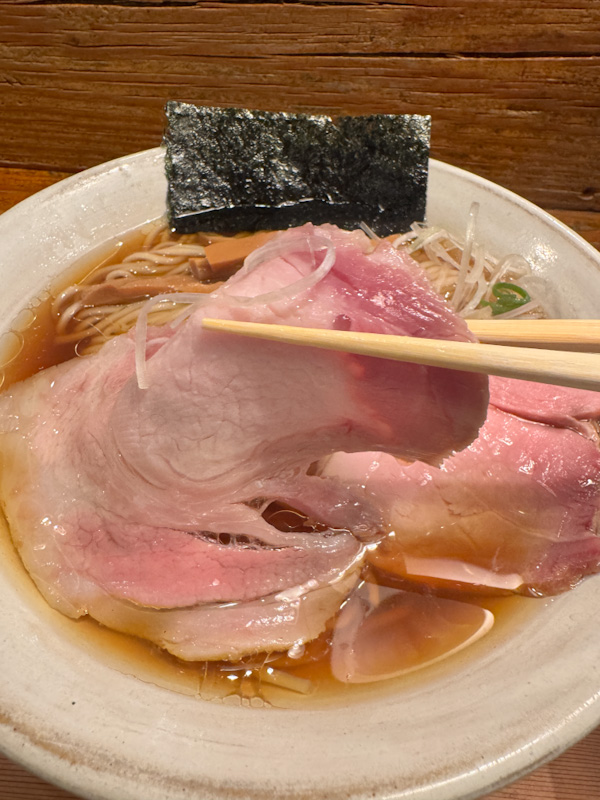
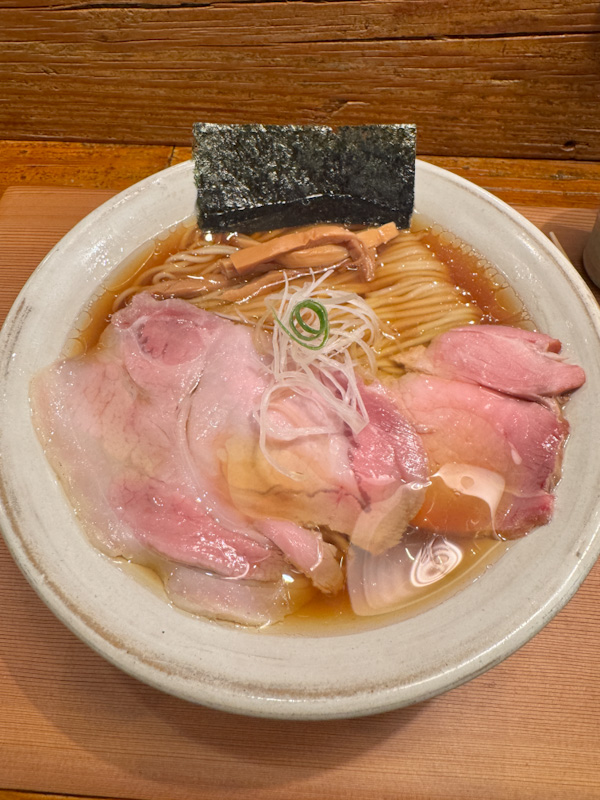
Shoyu Ramen: 90/100
Noodle: 30/35
Muginae’s house-made noodles—crafted with Hokkaido wheat—are medium-thin, straight, and slightly angular at the edges. They’re cooked just a little softer than al dente, giving them a springy, mildly chewy bite. There’s a pleasant earthy wheat aroma, though the mouthfeel is a bit subjective—some might not love the softer texture, and the flavour, while decent, isn’t particularly distinctive. Still, solid quality noodles.
Soup: 35/35
This is where the ramen really shines. The broth is also proudly free from MSG or chemical seasonings, built instead on quality ingredients like katsuobushi, niboshi, and kombu. It starts off with a savoury umami punch, followed by mellow shoyu notes and a sweet, slightly tangy finish—likely from the fish base. The chicken oil adds a smooth richness, but the broth still drinks clean, leaving no greasy film. It’s a beautifully layered, well-balanced soup that doesn’t overpower and keeps you going back for sip after sip.
Meat: 20/20
You get two large slices of sous-vide pork shoulder chashu. Served slightly pink, it’s cooked just right—juicy, tender, and full of natural porky sweetness. The lean parts are silky soft, but the fatty bits can be hit or miss: some melt-in-your-mouth, some a bit too stringy. The marination is light, letting the quality of the meat shine through. Bonus points for the edge of the chashu, which carries a unique applewood-like smoked aroma.
Topping: 5/10
Toppings are locally sourced and high-quality, though taste-wise they’re more about subtle support than standout moments:
- Menma: tender and mildly pungent, with a savoury-sour touch that adds some nice mid-notes to the bowl.
- Nori: lightly salted, crisp, and best enjoyed after soaking to draw out the umami.
- Shiranegi (white negi): fresh, piquant, and aromatic—adds a welcome sharpness to balance the richness of the soup.
Summary
Muginae’s Shoyu Ramen is all about finesse and clean depth. The highlight is hands-down the soup, which delivers a complex, layered experience without relying on chemical shortcuts. The noodles are well-crafted, though maybe not everyone’s favourite texture. Meat and toppings are high quality, even if they don’t steal the spotlight. It’s a bowl that quietly impresses—and lingers long after you’re done.
DISCLAIMER
One man’s meat is another man’s poison.
Find out more about our palettes and how we evaluate our ramen here. 😉

